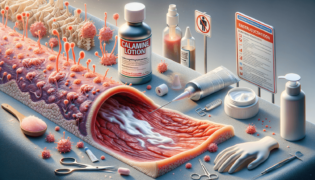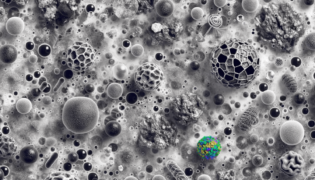To remove anal skin tags, consult a medical professional for a safe and appropriate procedure, such as surgical excision, electrosurgery or cryotherapy. Do not attempt self-removal at home, as this can cause complications and infections.
Professional Treatment Options for Skin Tags
Medical professionals can recommend the following treatments for removing skin tags safely:
- Surgical Excision: A doctor uses a sterile scalpel or scissors to remove the skin tag.
- Electrosurgery: High-frequency electrical currents are used to burn off the skin tag.
- Cryotherapy: A physician applies liquid nitrogen to freeze and remove the skin tag.
Why Not to Attempt Home Removal
Self-removal of anal skin tags can lead to complications such as bleeding, infections, or scarring. Additionally, the wrong diagnosis can result in damage to healthy skin or underlying tissue.
Skincare Logix: Expert Advice on Skin Tags Remover
At Skincare Logix, we emphasize the importance of seeking professional advice for dealing with anal skin tags. Remember, your safety and skin health should always come first.
Introduction
Anal skin tags are small, benign growths that can occur near the anus, causing discomfort or self-consciousness. At Skincare Logix, we understand the importance of providing clear, expert guidance on removing anal skin tags. With that in mind, we’ve compiled useful information on dealing with these bothersome growths effectively and safely.
Professional Treatment Options for Skin Tags
When it comes to anal skin tag removal, relying on a medical professional is the most secure approach. Here are some common in-office treatments that ensure the safety and comfort of patients:
- Surgical Excision: A doctor uses a sterile scalpel or scissors to remove the skin tag.
- Electrosurgery: High-frequency electrical currents are used to burn off the skin tag.
- Cryotherapy: A physician applies liquid nitrogen to freeze and remove the skin tag.
Why Not to Attempt Home Removal
Self-removal of anal skin tags can lead to complications such as bleeding, infections, or scarring. Additionally, the wrong diagnosis can result in damage to healthy skin or underlying tissue. To safeguard your skin health, always consult a professional before attempting any skin tag removal procedure.
Preventing Skin Tags
While it’s difficult to guarantee complete prevention of skin tags, incorporating a few lifestyle changes can minimize their occurrence. Strategies include maintaining a healthy diet, regular exercise, and proper hygiene. Furthermore, wear loose, breathable clothing to reduce friction and irritation in the anal area.
When to See a Doctor
If you notice any changes in the appearance, size, or color of an anal skin tag or experience pain or bleeding, it is crucial to seek medical attention immediately. A doctor can determine if the skin tag requires removal or if there are other health concerns that need addressing.
Skincare Logix: Expert Advice on Skin Tags Remover
At Skincare Logix, we’re dedicated to providing essential skincare advice and recommendations. Remember, your safety and skin health should always come first. If you’re dealing with anal skin tags, trust in the expertise of a medical professional to ensure the best
Frequently Asked Questions
After reading our blog post on removing anal skin tags, you may have additional questions or concerns. We’ve compiled a list of frequently asked questions to address these topics and provide further clarity.
What causes anal skin tags?
Anal skin tags often result from prolonged irritation or friction in the anal area, constipation, hemorrhoids, or anal fissures. However, the exact cause remains unclear, and they can sometimes occur without any evident reason.
Are anal skin tags cancerous or dangerous?
No, anal skin tags are benign growths that do not pose a risk for cancer or other serious health issues. However, if you have any concerns, consult a healthcare provider for a proper evaluation and diagnosis.
Can skin tags grow back after removal?
While it is uncommon for a specific skin tag to grow back after removal, new skin tags may appear in the same area or in other parts of the body prone to friction or irritation.
How long does the healing process take after anal skin tag removal?
The healing time varies depending on the removal method and individual factors. Generally, it takes between one to three weeks for the area to completely heal. Your doctor will provide specific aftercare instructions to promote proper healing.
What is the difference between a skin tag and a wart?
Skin tags are smooth, soft, benign growths that are often connected to the skin by a stalk, whereas warts are rough, raised skin growths caused by the human papillomavirus (HPV). Warts can be contagious, while skin tags are not.





















